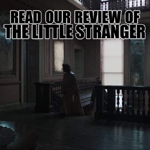Horror films have historically performed very well.
They never really get the same attention or focus as more prestigious genres like drama or even comedy or action, but they tend to chug away reliably in the background. Since the explosion of blockbuster filmmaking during the seventies, horror has always had several innate advantages over other genres. Horror films are cheaper to produce than star-studded dramas, period pieces, or epic spectacle, meaning that they have to earn less money to be profitable. Horror films are also largely seen as disposable and fun films, so there is always a market for these films and they tend to be insulated from bad reviews.

Indeed, there has been a miniature horror revolution over the past few years, itself building on the low-budget found footage revolution of the first decade of the twenty-first century. Very few people seem to talk about it, but director James Wan seems to have built what is Hollywood’s second successful shared universe with the nexus connecting films like The Conjuring and The Conjuring II to movies like Annabelle and The Nun. Indeed, the success of these films has even led to a sort of weird hybrid of revived seventies horror stylings with blockbuster narrative sensibilities.
However, there has also been a quieter revolution in horror storytelling, with several low-budget and independent horror films gaining critical and cultural traction. Films like The Babadook were greeted with enthusiasm. Get Out become one of a handful of low budget horror films to secure a Best Picture nomination. Films like Hereditary emerge from the festival circuit with considerable buzz. Horror movies have always been pointed towards and engaged with contemporary politics, often in a manner more visceral than the prestige dramas around them. However, it seems that is finally being acknowledged.

With all of this happening within the genre, there has been something else bubbling through contemporary horror cinema. Films like It Follows, Don’t Breathe, Lights Out and A Quiet Place represent a fascinating shift within the genre towards more self-aware storytelling. There is a decidedly meta quality to horror films like It Follows, Don’t Breathe, Lights Out and A Quiet Place. As with horror films like The Babadook and Get Out, these are films that hinge on the audience’s understanding of the mechanics and structure of horror films, weaponising the viewer’s expectations.
However, these films are markedly different from companion horrors like The Babadook and Get Out, films that use the language of horror to construct broader allegories. Instead, films like It Follows, Don’t Breathe, Lights Out and A Quiet Place are horror films that often seem to be explicitly about the experience of watching horror films.

Continue reading →
Filed under: Movies | Tagged: a quiet place, Cabin in the Woods, don't breathe, genre savvy, horror, it follows, lights out, nostalgia, postmodern, ringu, Scream, self-aware | Leave a comment »


































